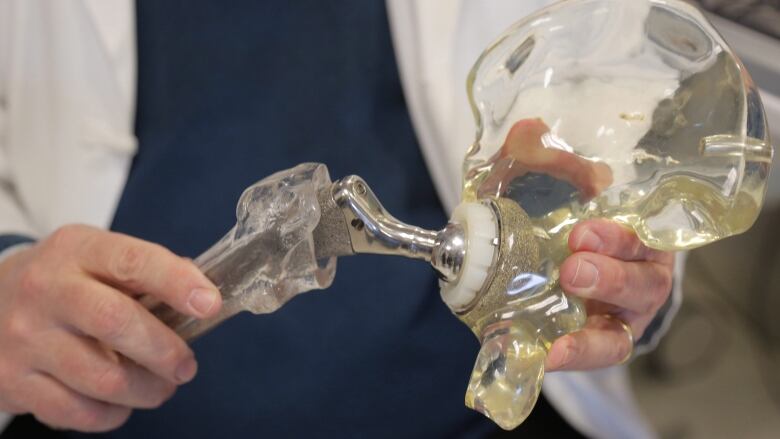B.C. patients wait longer for key medical procedures than other Canadians, report suggests
But wait times in British Columbia improving, report says

New data on wait times for priority medical procedures in Canada suggest B.C. patients are waiting longer than other Canadians, but the gap is closing.
Since 2004, the Canadian Institute for Health Information (CIHI) hasgathereddata measuring wait times for selected priority procedures, and measuring them againstestablished benchmark wait times.
The procedures measuredincludehip replacement, knee replacement, hip fracture repair, cataract surgery, and radiation therapy.
Behind the pack
The wait times for the procedures vary depending on where patients live, but in 2018, the waits in B.C. were notably longer.
The benchmark wait time for hip replacement surgery was determined to be six months. Seventy-five per cent of Canadians received surgery within that time in 2018, while only 59 per cent of British Columbian patientswere as lucky.
For hip fracture repair, 88 per cent of Canadians were treated within the 48-hour benchmark time, while 64 per cent of B.C. patients made the target.
The recommended wait time for knee replacement surgery is six months, and across Canada, 69 per cent received the procedure in that time, but only 59 per cent of British Columbian patientswere treatedwithin that time frame.
The wait time for radiation therapy is 28 days, and 97 per cent of patients across the country received treatment by the cutoff, while only 85 per cent of B.C. patients made that time.
As for cataract surgery, 70 pe cent of Canadians received treatment by the benchmark time of 16 weeks, while only 59 per cent of British Columbians made it during the targeted time frame.
But while B.C. numbers are lower than average, since 2014, the percentage of Canadian patients meeting these benchmark times have dropped across the board, save for hip fracture repair.
"Some of those provinces that have higher rates have lost ground in recent years, so you'd have to be looked at it in context," said the CIHI's Jennifer Frood.
"So B.C. is showing a steady increase, which is the good news story, even though they may not be up to the Canadian standard."
Gaining ground
Despite B.C.'s comparatively long wait times,the province is picking up the pace.
Comparing the priority procedure wait times from 2016 to 2018, the province is improving overall.
Hip replacement treatment met the benchmark wait time in sixper cent more cases, knee replacement roseby12 per cent, and radiation therapywait times improved by two per cent.
However, some modest declines in waits were observed with hip fracture repair, which fell by oneper cent, and cataract surgery, which dropped twoper cent.
"B.C. is one of the few provinces that hasn't lost ground in terms of having their patients meet recommended benchmarks,"said Frood. "They've actually shown a steady increase in patients meeting that criteria."
B.C.'s Health Minister Adrian Dix attributedthe reducedwait times to the provincial government's surgical strategy, launched in March 2018, which promised $75 million in funding for 2018-19, and $100 million for 2019-20.
The initiative is aimed at reducing health-care wait times, and involves new hip and knee replacement programs, more dental and other surgeries, making surgical programs and operating rooms more efficient, and addressing demands for healthcare professionals.
"When you look at the last year of the previous government, we did about 14,000 hip and knee replacements surgeries for example. And this year we're doing about 19,000,"said Dix.
"Obviously when you do more, it reduces wait times. And when you do more over a series of years, which is our plan, then you're going to see those wait times change very quickly."












_(720p).jpg)


 OFFICIAL HD MUSIC VIDEO.jpg)
.jpg)



























































































